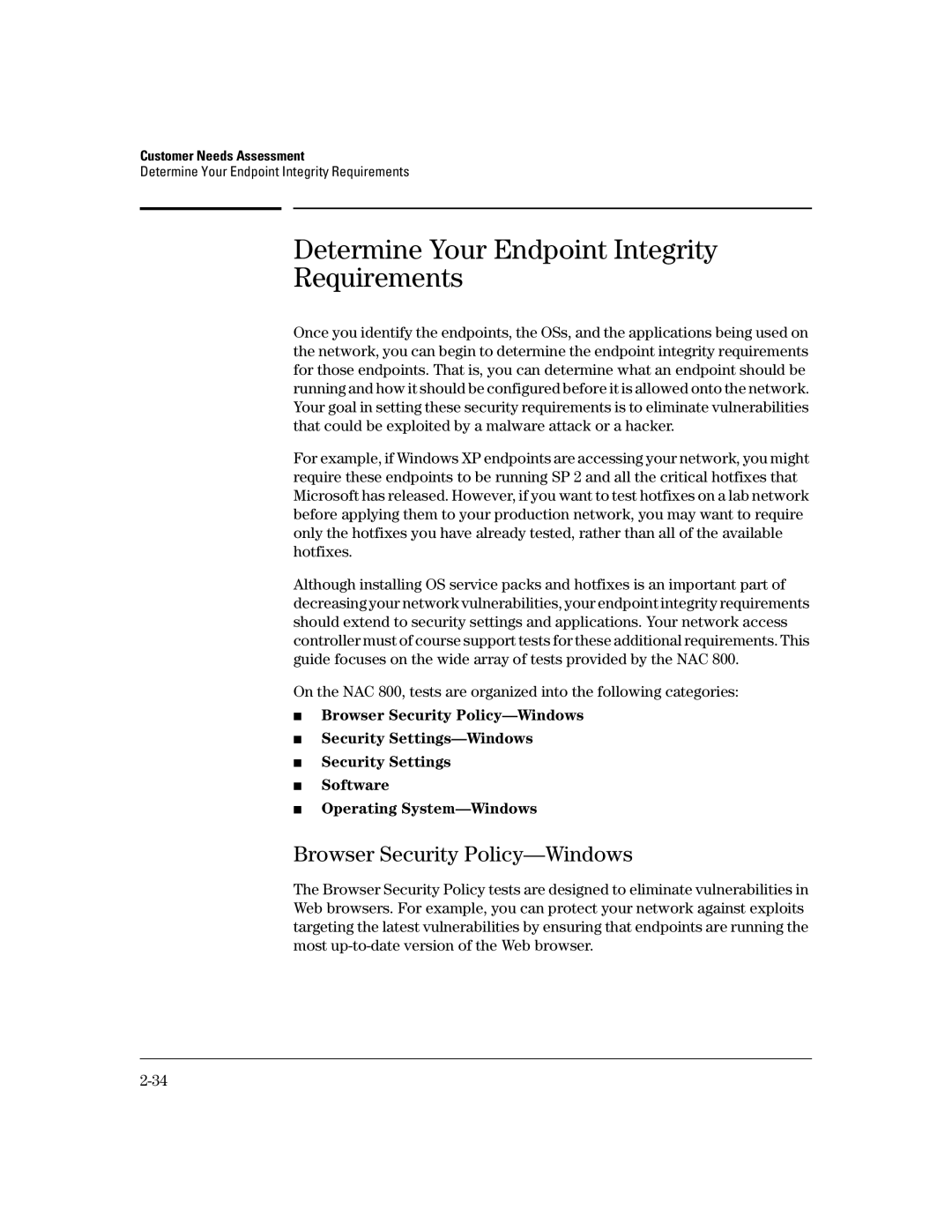
Customer Needs Assessment
Determine Your Endpoint Integrity Requirements
Determine Your Endpoint Integrity
Requirements
Once you identify the endpoints, the OSs, and the applications being used on the network, you can begin to determine the endpoint integrity requirements for those endpoints. That is, you can determine what an endpoint should be running and how it should be configured before it is allowed onto the network. Your goal in setting these security requirements is to eliminate vulnerabilities that could be exploited by a malware attack or a hacker.
For example, if Windows XP endpoints are accessing your network, you might require these endpoints to be running SP 2 and all the critical hotfixes that Microsoft has released. However, if you want to test hotfixes on a lab network before applying them to your production network, you may want to require only the hotfixes you have already tested, rather than all of the available hotfixes.
Although installing OS service packs and hotfixes is an important part of decreasing your network vulnerabilities, your endpoint integrity requirements should extend to security settings and applications. Your network access controller must of course support tests for these additional requirements. This guide focuses on the wide array of tests provided by the NAC 800.
On the NAC 800, tests are organized into the following categories:
■Browser Security
■Security
■Security Settings
■Software
■Operating
Browser Security Policy—Windows
The Browser Security Policy tests are designed to eliminate vulnerabilities in Web browsers. For example, you can protect your network against exploits targeting the latest vulnerabilities by ensuring that endpoints are running the most
